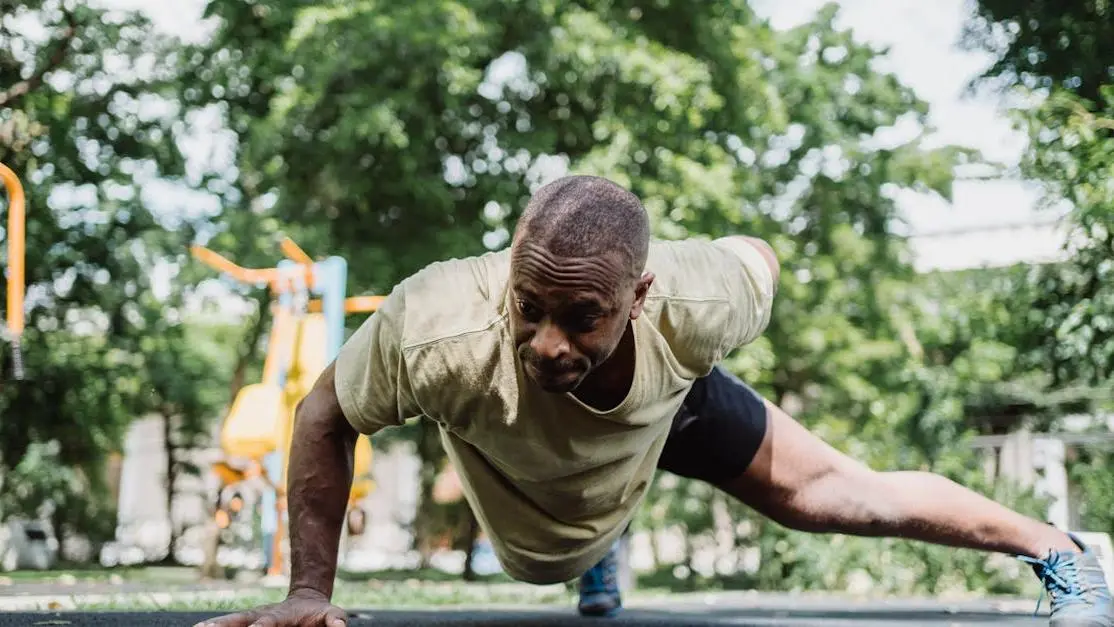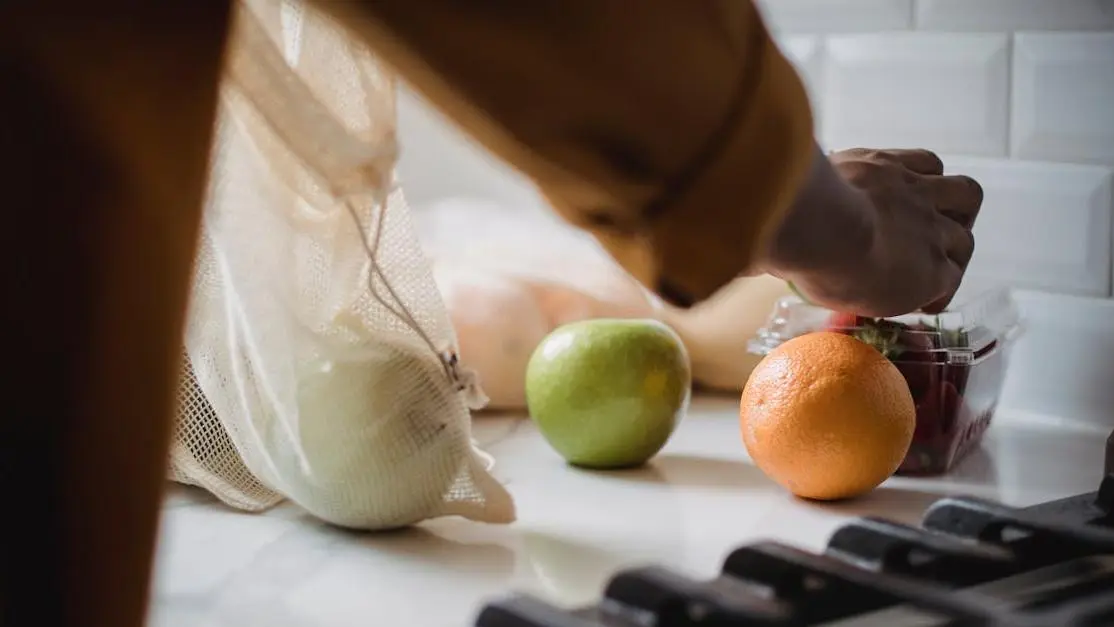Looking to build functional strength with minimal equipment? You’re in the right place. Good calisthenic exercises can transform your fitness using just your body weight.
This article covers five essential routines that target different muscle groups, making it ideal whether you’re new to fitness or transitioning from a gym regimen.
Learn how to optimize your workouts for maximum gains and practical results.
- 1. Push-Ups for Upper Body Strength
- 2. Squats for Lower Body Development
- 3. Pull-Ups for Back and Biceps
- 4. Planks for Core Stability
- 5. Dips for Triceps and Chest
- 6. Lunges for Leg Balance and Strength
- 7. Leg Raises for Lower Abs
- 8. Burpees for Full-Body Conditioning
- 9. Handstand Push-Ups for Shoulder Strength
- 10. Mountain Climbers for Cardio and Core
- 11. Hollow Body Holds for Core Endurance
- Essential Gear for Calisthenics
- How to Build Progression in Calisthenics
- Tips for Beginners Starting Calisthenics
- Calisthenics vs. Weight Training
- Conclusion: Start Your Calisthenic Journey
1. Push-Ups for Upper Body Strength
Push-ups are a staple in any calisthenics routine for a good reason. At Peak Performance, we believe mastering this exercise can set the foundation for impressive upper body strength.
How to Perform a Standard Push-Up
- Starting Position: Begin in a plank position with your hands slightly wider than shoulder-width apart. Your body should form a straight line from your head to your heels.
- Lowering Phase: Slowly bend your elbows and lower your body until your chest nearly touches the floor.
- Pushing Up: Press through your palms to return to the starting position.
Benefits of Push-Ups
- Upper Body Strength: Targets chest, shoulders, and triceps.
- Core Engagement: Improves core stability.
- Versatility: Countless variations to target different muscle groups.
Variations to Consider
- Incline Push-Ups: Easier on beginners; place your hands on a bench or step.
- Decline Push-Ups: Elevate your feet to engage upper chest and shoulders more.
- Diamond Push-Ups: Hands close together under your chest to work triceps more.
By incorporating these variations, you can challenge different muscle fibers and avoid hitting a plateau.
2. Squats for Lower Body Development
Squats are an excellent way to build strong legs and glutes. They help in enhancing muscle endurance and functional strength.
How to Perform a Standard Squat
- Starting Position: Stand with your feet shoulder-width apart. Toes slightly turned out.
- Descending: Lower your body as if sitting in a chair. Keep your back straight and your knees aligned with your toes.
- Ascending: Push through your heels to return to the starting position.
Benefits of Squats
- Muscle Activation: Engages quadriceps, hamstrings, and glutes.
- Functional Fitness: Mimics everyday activities, improving overall balance and coordination.
- Low-Impact: Gentle on the joints while still providing significant muscle engagement.
Squat Variations
- Pistol Squats: Single-leg squats that improve balance and coordination.
- Jump Squats: Adds a plyometric element for explosive power.
- Goblet Squats: Hold a weight for added resistance.
Incorporating these variations ensures a balanced and dynamic leg workout.
3. Pull-Ups for Back and Biceps
If you’re aiming to develop a strong back and well-defined biceps, pull-ups are non-negotiable.
How to Perform a Pull-Up
- Grip: Use an overhand grip with hands shoulder-width apart.
- Pulling Up: Engage your back and pull your chin above the bar.
- Lowering Phase: Slowly return to the starting position with control.
Benefits of Pull-Ups
- Back Strength: Targets the latissimus dorsi, rhomboids, and traps.
- Arm Definition: Biceps and forearms get a solid workout.
- Grip Strength: Enhances overall gripping ability.
Tips for Beginners
- Assisted Pull-Ups: Use resistance bands for support.
- Negative Pull-Ups: Focus on the lowering phase to build strength.
- Chin-Ups: Use an underhand grip to involve the biceps more.
Start incorporating these into your routine to see noticeable improvements in your upper body strength.
4. Planks for Core Stability
Planks are an indispensable exercise for developing core strength and overall stability.
How to Perform a Standard Plank
- Starting Position: Get into a forearm plank position with elbows directly under shoulders.
- Engage Core: Tighten your abdominal muscles and maintain a straight line from head to heels.
- Hold: Maintain this position for as long as possible without compromising form.
Benefits of Planks
- Core Stability: Engages multiple core muscles, including the rectus abdominis and obliques.
- Postural Improvement: Strengthens the back muscles to support better posture.
- Versatility: Can be modified to challenge different areas of the body.
Plank Variations
- Side Planks: Focuses on the obliques.
- Plank Jacks: Adds a cardiovascular element by jumping your feet apart and together.
- Extended Planks: Increase difficulty by extending your arms further out.
Adding variety to your plank routine helps keep your workouts engaging.
5. Dips for Triceps and Chest
Dips are fantastic for building strong triceps and a defined chest.
How to Perform a Standard Dip
- Starting Position: Use parallel bars and support yourself with straight arms.
- Lowering Phase: Bend your elbows to lower your body until your shoulders are below your elbows.
- Pushing Up: Press upwards to return to the starting position.
Benefits of Dips
- Tricep Strength: Primarily targets the triceps.
- Chest Activation: Engages the chest muscles efficiently.
- Upper Body Coordination: Improves overall strength and dexterity.
Dip Variations
- Bench Dips: Easier variation using a bench.
- Weighted Dips: Add weight for more resistance.
- Ring Dips: Use gymnastic rings for added instability and challenge.
Including dips in your routine will greatly benefit your upper body strength.
6. Lunges for Leg Balance and Strength
Lunges are excellent for boosting leg strength and improving balance.
How to Perform a Standard Lunge
- Starting Position: Stand tall with feet hip-width apart.
- Stepping Forward: Take a big step forward and lower your hips until both knees are at 90-degree angles.
- Pushing Back: Push off the front foot to return to the starting position.
Benefits of Lunges
- Muscle Engagement: Works quadriceps, hamstrings, and glutes.
- Balance and Coordination: Improves lower body stability.
- Functional Strength: Mimics natural movements, emphasizing unilateral strength.
Lunge Variations
- Walking Lunges: Add a dynamic movement for increased difficulty.
- Reverse Lunges: Step backward to reduce knee strain.
- Curtsy Lunges: Cross one leg behind for a unique muscle angle.
Integrating these into your workout can help achieve well-rounded leg development.
7. Leg Raises for Lower Abs
Leg raises are a powerful exercise for targeting the lower abs.
How to Perform a Standard Leg Raise
- Starting Position: Lie flat on your back with your legs extended.
- Raising Legs: Lift your legs to a 90-degree angle with a slight bend in your knees.
- Lowering Phase: Slowly lower your legs back down without letting them touch the floor.
Benefits of Leg Raises
- Lower Ab Activation: Isolates the lower abdominal muscles.
- Core Stability: Improves overall core strength.
- Low Impact: Gentle on the lower back if performed correctly.
Variations to Try
- Bent-Knee Raises: Eases the strain on your lower back.
- Weighted Leg Raises: Hold a light weight between your feet for added resistance.
- Hanging Leg Raises: Perform using a pull-up bar for a more intense workout.
Leg raises should be a staple for anyone looking to enhance their lower abdominal strength.
8. Burpees for Full-Body Conditioning
Burpees are a comprehensive exercise that boosts cardiovascular fitness while toning muscles.
How to Perform a Standard Burpee
- Starting Position: Stand with feet shoulder-width apart.
- Squat Down: Lower into a squat position with your hands on the ground.
- Kick Back: Shoot your feet back into a plank position.
- Push-Up: Perform a push-up.
- Return to Squat: Jump your feet back to your hands.
- Jump Up: Explode into a jump with hands reaching overhead.
Benefits of Burpees
- Full-Body Workout: Engages multiple muscle groups from head to toe.
- Cardio Boost: Elevates heart rate quickly.
- Endurance Building: Improves overall stamina and endurance.
Variations for Added Challenge
- Burpee Pull-Ups: Add a pull-up after the jump.
- One-Armed Burpee: Perform with one arm for added difficulty.
- Box Jump Burpee: Incorporate a box jump instead of a regular jump.
Burpees are a phenomenal way to boost cardiovascular health while toning your entire body.
9. Handstand Push-Ups for Shoulder Strength
Handstand push-ups are a dynamic calisthenic exercise that pushes (quite literally) your shoulder strength to new heights. Handstands can be intimidating, but they also unlock a new level of body control and upper body power.
How to Perform Handstand Push-Ups
- Starting Position: Begin in a wall-supported handstand. Your hands should be shoulder-width apart, and your arms straight.
- Lowering Down: Slowly bend your elbows, bringing your head toward the ground. Engage your core to maintain balance.
- Pushing Up: Push through your palms to extend your arms back to the starting position.
Benefits of Handstand Push-Ups
- Shoulder Strength: Targets deltoids, triceps, and upper chest.
- Balance and Coordination: Improves control and stability.
- Vertical Pushing Power: Enhances overall pressing strength.
Progression Tips
- Pike Push-Ups: Start with pike push-ups by forming an inverted V-shape.
- Wall Walks: Walk your feet up the wall to get comfortable with the upside-down position.
- Negative Handstand Push-Ups: Focus on the lowering phase to build strength.
With these progressions, you’ll be nailing handstand push-ups in no time.
10. Mountain Climbers for Cardio and Core
Mountain climbers are a fantastic way to combine cardio and core strengthening. This exercise mimics the motion of climbing a mountain – minus the altitude!
How to Perform Mountain Climbers
- Starting Position: Begin in a plank position, with your hands directly under your shoulders.
- Climbing Motion: Quickly bring one knee toward your chest, then switch legs. Keep your movements controlled.
- Continue the Motion: Keep alternating legs in a running motion.
Benefits of Mountain Climbers
- Cardiovascular Fitness: Boosts heart rate and burns calories.
- Core Activation: Engages the abs, hip flexors, and shoulders.
- Full-Body Workout: Utilizes multiple muscle groups, adding intensity.
Variation Ideas
- Cross-Body Climbers: Bring each knee to the opposite elbow.
- Spider Climbers: Bring your knee to the outside of your elbow.
- Slider Climbers: Use sliders or towels under your feet for added resistance.
Mountain climbers are an effective exercise to raise your heart rate while building strength.
11. Hollow Body Holds for Core Endurance
Hollow body holds are a stellar choice for building core endurance and stability. Gymnasts swear by this move for its ability to lay a rock-solid foundational strength.
How to Perform a Hollow Body Hold
- Starting Position: Lie on your back, extending your arms overhead and legs straight.
- Engaging Core: Lift your arms, shoulders, and legs off the ground. Your lower back should stay pressed into the floor.
- Hold the Position: Maintain the position for the desired time, keeping your body tight and slightly curved.
Benefits of Hollow Body Holds
- Core Stability: Engages the entire core, including obliques.
- Muscle Endurance: Builds stamina in the abdominal muscles.
- Functional Strength: Enhances performance in other bodyweight exercises.
Advanced Techniques
- Weighted Holds: Add ankle weights for increased difficulty.
- Hollow Rocks: Rock back and forth while maintaining the position.
- Tuck Holds: Begin with knees tucked to decrease intensity.
Incorporate hollow body holds regularly to see marked improvements in core strength.
Essential Gear for Calisthenics
While calisthenics primarily requires just your body weight, having some essential gear can enhance your workouts.
- Pull-Up Bars: Crucial for exercises like pull-ups, chin-ups, and hanging leg raises.
- Resistance Bands: Ideal for added resistance or assistance with various moves.
- Parallettes: Perfect for dips, L-sits, and handstand progressions.
- Gymnastic Rings: Offer versatility and challenge for many exercises.
Adding these tools can elevate your calisthenic routine, making it more effective and enjoyable.
How to Build Progression in Calisthenics
To continually improve in calisthenics, progression is key. It ensures your workouts stay challenging and effective.
- Gradual Increase: Start with easier variations and gradually move to more difficult ones.
- Consistent Practice: Regular practice helps in mastering techniques.
- Track Progress: Keep a workout journal to track your sets, reps, and improvements.
Progressing in calisthenics is all about consistent effort and pushing your limits.
Tips for Beginners Starting Calisthenics
Starting a calisthenic journey doesn’t have to be daunting. Here are some tips to help beginners get started on the right foot.
- Master Basics: Focus on foundational moves like push-ups and squats.
- Form Over Speed: Prioritize proper form to avoid injuries.
- Create a Plan: Join beginner-friendly programs like Peak Performance’s training courses for structured guidance.
With these tips, you’ll build a strong foundation and stay motivated.
Calisthenics vs. Weight Training
Comparing calisthenics with weight training can help you decide which fits your goals better.
- Equipment: Calisthenics relies on body weight, while weight training requires gym equipment.
- Flexibility: Calisthenics can be done anywhere, while weight training often requires a specific setting.
- Muscle Gain: Weight training targets muscle hypertrophy, whereas calisthenics focuses on functional strength.
Both methods have their benefits, so choose what aligns best with your fitness goals.
Conclusion: Start Your Calisthenic Journey
By incorporating these good calisthenic exercises into your routine, you’ll build functional strength, enhance endurance, and improve overall fitness. Start your journey with Peak Performance and unlock your full potential.



